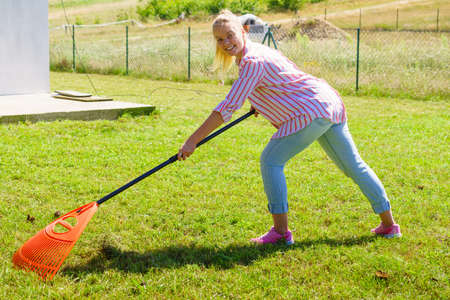Identifying Wasps and Hornets Common in UK Gardens
When dealing with wasp and hornet problems in your garden, it is essential to first recognise the types you are likely to encounter in the UK. The most common species of wasps found here include the Common Wasp (Vespula vulgaris) and the German Wasp (Vespula germanica). Hornets, though less widespread, are usually represented by the European Hornet (Vespa crabro). Distinguishing between wasps and hornets is important for effective management. Wasps are generally smaller, with bright yellow and black stripes and a slender body shape. Hornets are noticeably larger, often up to 3.5cm long, with a reddish-brown head and thorax combined with yellow abdominal markings.
Recognising their nests can also help you assess potential risks and choose the right approach for removal or deterrence. Wasp nests are typically grey or off-white, papery structures that may be found hanging from trees, tucked in sheds, or within loft spaces. They start small but can grow rapidly over the summer months. In contrast, hornet nests are usually larger and more robust, often built in hollow trees or wall cavities, featuring a layered paper-like structure. By learning these differences, you can make informed decisions about how to safely manage these insects and maintain a peaceful garden environment.
Understanding Why Wasps and Hornets Appear
Wasps and hornets are a common sight in British gardens, especially during the warmer months. Understanding what attracts these insects can help you manage their presence more effectively. Both wasps and hornets are drawn to gardens for specific reasons, often related to food sources, nesting opportunities, and seasonal changes.
Common Attractants in Gardens
Your garden may be more appealing to wasps and hornets due to a variety of factors. Here is a simple table outlining the most frequent attractants:
| Attractant | Description |
|---|---|
| Food Sources | Sweet fruits, fallen apples, sugary drinks, exposed rubbish bins, and compost heaps. |
| Flowers | Nectar-rich flowers provide essential food for adult wasps and hornets. |
| Pests | Wasps hunt caterpillars and other small insects commonly found in gardens. |
| Shelter | Overgrown bushes, sheds, eaves, and wall cavities offer ideal spots for nest building. |
Seasonal Behaviour of Wasps and Hornets
The activity of wasps and hornets in your garden changes throughout the year. In spring and early summer, queen wasps emerge from hibernation looking for nesting sites. During late summer and early autumn, worker wasps become more noticeable as they search for sweet foods before the colony dies off. Hornets have similar habits but tend to be less aggressive than common wasps.
Seasonal Pattern Overview
| Time of Year | Behaviour |
|---|---|
| Spring | Queens seek new nesting sites; minimal activity from workers. |
| Summer | Nests grow rapidly; increased foraging by workers for food. |
| Late Summer/Autumn | Workers become more visible as natural food sources decline; attracted to sweet foods at outdoor gatherings. |
Key Takeaway
If you notice an increase in wasp or hornet activity, it is likely linked to available food, nesting spots, or the time of year. Being aware of these patterns can help you take steps towards safer deterrence and nest management in your garden.
![]()
3. Safety Precautions for Gardeners and Families
Dealing with wasps and hornets in your garden can be unnerving, especially during the warmer months when activity peaks. However, with some practical steps, you can minimise risks and enjoy your outdoor space safely.
Avoiding Stings: Practical Tips
- Wear light-coloured clothing, as dark or bright colours attract wasps and hornets.
- Avoid using strong perfumes or scented lotions before gardening, as these scents can lure insects.
- Keep food and drinks covered when eating outside. Wasps are drawn to sweet things.
- Be cautious when picking up fallen fruit or trimming hedges, as these areas often hide nests or foraging insects.
First Aid for Stings
- If stung, move away from the area calmly to avoid further stings; wasps release a pheromone that can attract others.
- Wash the affected area with soap and water to reduce infection risk.
- Apply a cold pack to ease swelling and pain.
- If swelling is severe or if there are signs of an allergic reaction (such as difficulty breathing or dizziness), seek medical help immediately by calling 999.
Creating a Safe Garden Environment
- Regularly inspect sheds, under eaves, and garden furniture for signs of nests—early detection is key.
- Seal bins tightly and remove rubbish promptly to reduce attraction.
- Plant insect-repellent herbs such as mint or basil around seating areas for a natural deterrent.
- Educate children about the importance of leaving wasps and hornets alone, and supervise pets outdoors during peak activity times.
By following these safety measures, gardeners and families can significantly reduce their chances of unpleasant encounters with wasps and hornets while maintaining a safe and welcoming garden environment.
4. Deterring Wasps and Hornets Naturally
Managing wasps and hornets in your British garden does not always mean reaching for chemical solutions. There are several effective, eco-friendly methods you can use to discourage these insects from settling and building nests near your home. Below, we highlight some practical steps and natural deterrents suited to UK gardens.
Eco-Friendly Deterrent Methods
Wasps and hornets are attracted by food, sweet drinks, and sheltered spaces. By making your garden less inviting, you can prevent them from becoming a nuisance. Here are some simple actions:
| Method | Description |
|---|---|
| Seal Bins Tightly | Ensure all outdoor bins have secure lids to reduce food smells that attract wasps. |
| Remove Fallen Fruit | Regularly clear away windfall fruit from under trees, as fermenting fruit is a major attractant. |
| Limit Sweet Scents | Avoid leaving sugary drinks or foods outside, especially during summer picnics or BBQs. |
Natural Repellents and Barriers
You can also use plants and household items as gentle deterrents:
| Repellent | How to Use |
|---|---|
| Peppermint Oil | Dab cotton balls with peppermint oil and place them near seating areas or potential nest sites. |
| Cucumber Peels | Scatter fresh cucumber peel around entry points; the scent is off-putting to wasps. |
| Aromatic Plants | Grow mint, thyme, or eucalyptus in pots near patios or doors to help repel flying insects. |
Preventative Garden Maintenance
Regularly inspect sheds, eaves, and garden structures for early signs of nesting. Filling cracks and crevices where wasps might begin to build helps stop colonies before they start. Keeping compost heaps covered is another wise step, as they can be attractive nesting spots.
Avoid Quick Fixes: Choose Sustainable Solutions
While it may be tempting to use sprays or traps, these often harm beneficial insects and disrupt your garden’s balance. The best results come from consistent preventative measures and choosing eco-friendly alternatives that fit the unique conditions of British gardens.
5. When and How to Remove a Nest
Assessing the Risk of a Wasp or Hornet Nest
Before considering removal, it’s important to assess the risk posed by the nest. In the UK, wasps and hornets are generally only aggressive when threatened, but nests close to entrances, busy garden paths, or children’s play areas present higher risks. Look for signs of increased activity or aggressive behaviour before making a decision.
Safe DIY Approaches
If the nest is small, easily accessible, and you are not allergic to stings, some homeowners attempt removal themselves. Always wear protective clothing covering your body, face, and hands. Plan removal in the evening or early morning when insects are less active. Commercial wasp sprays designed for UK species can be used, following instructions carefully. Never attempt removal from lofts, roof spaces, or high locations without proper equipment.
Important Precautions
Never use fire or water to remove a nest as this can anger the insects and make them more aggressive. Keep pets and children indoors during any DIY attempts. If you feel unsure at any stage, stop immediately and seek help.
When to Call a Professional
Larger nests, those located in hard-to-reach places (such as under eaves or inside walls), or nests belonging to hornets should always be handled by pest control professionals. This is especially important if you are allergic to stings or notice high levels of activity around the nest. In the UK, local councils often offer advice or pest control services—contact them for guidance.
Summary
Always weigh up the risks before attempting nest removal yourself. When in doubt, or if safety is compromised, professional help is not only safer but also more effective.
6. Dealing with Infestations: Local UK Resources
If you find yourself facing a persistent wasp or hornet infestation in your garden, there are several local resources across the UK that can help you deal with the problem safely and efficiently.
Contacting Your Local Council
Most local councils in the UK offer advice or services for dealing with wasp and hornet nests, particularly if the nest poses a risk to public areas or vulnerable individuals. Visit your councils website and search for pest control or wasp removal. Many councils provide an online form or dedicated phone line for pest-related issues. Fees may apply, and response times can vary depending on demand and location.
Pest Control Professionals
If the problem is urgent or the nest is difficult to access, its best to contact a professional pest control company. Look for firms registered with the British Pest Control Association (BPCA) or National Pest Technicians Association (NPTA) to ensure safe, reliable service. These experts use appropriate treatments and protective gear, significantly reducing risk to you and your household.
Choosing a Reputable Service
Ask neighbours or friends for recommendations, or check online reviews for local providers. Always confirm costs upfront and ensure technicians have proper identification and credentials before allowing them onto your property.
Community Advice and Support
Neighbourhood social media groups, community noticeboards, or local residents associations are valuable sources of practical advice. Sharing experiences can help you learn which deterrents work locally, when to expect seasonal swarms, and which services others have found effective.
When to Seek Emergency Help
If anyone in your household has a severe allergy to stings, or if a nest is located in a high-traffic area such as near doorways or children’s play areas, do not attempt removal yourself. Contact emergency services via 999 if someone is stung and shows signs of anaphylaxis (severe allergic reaction).
By using these local UK resources, you can tackle wasp and hornet problems confidently while ensuring safety for everyone in your home and neighbourhood.


